Madagascar History Facts and Timeline
(Madagascar, MG, Africa)
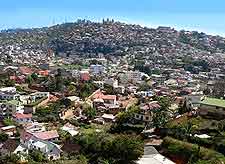
When settlers first arrived from far away Borneo in canoes, sometime around 300 BC, the sizeable island of Madagascar was among the last remaining large landmasses on the planet to be colonised by humans.
By the turn of the 7th century, settlers had started to clear large tracts of forest in the Central Highlands and were joined roughly 400 years later by migrants from East Africa, who brought with them zebu (domesticated humped cattle), which they successfully herded for their meat and milk. However, perhaps the most intriguing part of Madagascar's history is actually its natural history, since it has been isolated from the original Pangea super-continent that formed Africa for a considerable time. As a result, it boasts a unique collection of flora.
The Arab and European Period
When Arabs first arrived sometime during the 7th century, they brought with them the trappings of Middle Eastern culture including their script, astrology and religious beliefs. For centuries they dominated trade in and out of Madagascar, which soon became something of a trading post between the Arab and African world and the Orient.
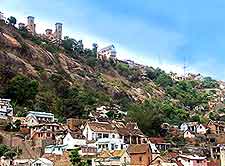
The Europeans, in the form of the Portuguese at first, did not arrive until much later in 1500 when Diogo Dias, an experienced explorer, spotted the island whilst sailing by and landed. This discovery was followed more than 100 years later by the French, who set up a series of trading points and well-placed harbours.
The Merina Kings
By the time the Merina kings Andriamanelo (reign - 1540 to 1575), Ralambo (1575 to 1612) and Andrianjaka (1612 and 1630) ruled the Central Highlands, the thriving herds of zebu had all but reduced the area to grassland, changing the ecological history of Madagascar forever. Oral histories passed down through generations of Merina tell how they encountered the Vazimba, a people widely believed to have been pygmies and the island's earliest inhabitants.
For centuries, the Merina warred with the Vazimba, but it was during the kings' era that the Merina came to prominence. Under Andrianjaka, they gained control of the hill of Analamanga from a Vazimba king and built their capital city. This city actually remains as the Madagascan capital of Antananarivo until this day.
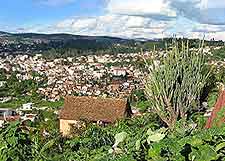
The Pirate Era
While the Merina got the upper hand in the Central Highlands, on the Madagascan coast an altogether different series of confrontations were brewing as various European countries, traders and pirates vied for influence at the ports of this strategically important island. Some historians later pointed to the small north-easterly island of Nosy Boroha as being the site of the legendary pirate haven called Libertalia, under the control of Captain James Misson.
By the end of the 18th century, many ships that passed through Madagascar were part of the emerging Transatlantic slave trade. A few decades earlier, a British seaman called Robert Drury was unfortunately shipwrecked here at the age of 17. He then spent the next 15 years of his life living on the island and writing what is now the most detailed account of Madagascar during this period.
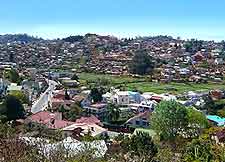
French Colonisation in Madagascar
Following a period in the 19th century in which successive monarchs attempted to limit and expel both British and French colonisers, the island witnessed a series of wars with France from 1883 and these soon changed Madagascar's history. First, the government ceded Antisiranana, today known as Diego Suarez.
Then in 1894, the coastal town of Toasmasina fell, followed by Mahajanga the following year. By the latter part of 1895, Antananarivo and by default the whole of the island, was under French control. However, this was not without a heavy loss of life on both sides, prompting the Merina royal family to flee for safety. They headed to Reunion Island and Algeria.
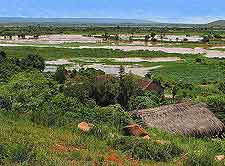
Until this time, the Prime Minister resided at the Andafiavaratra Palace, now a museum. The capital was made more Franco friendly with wide boulevards, the interiors were turned into plantations, and schools were established during the 65 years of Madagascar's history under
Paris rule. In 1965, with independence restored, the government renamed many areas of the capital, including both the Independence Avenue and the Independence Square, now the heart of Antananarivo.
Political power in Madagascar soon devolved into a series of coups, assassinations and military manoeuvres, in an attempt to try and install a democratically elected leader. Marc Ravalomanana came to dominate power in the early 21st century under disputed elections terms and was eventually disposed by the army, who installed the young mayor of Antananarivo as 'their man in charge'. The situation remains fractious and somewhat unresolved, while the country itself is noted as one of Africa's poorer nations.
 When settlers first arrived from far away Borneo in canoes, sometime around 300 BC, the sizeable island of Madagascar was among the last remaining large landmasses on the planet to be colonised by humans.
When settlers first arrived from far away Borneo in canoes, sometime around 300 BC, the sizeable island of Madagascar was among the last remaining large landmasses on the planet to be colonised by humans. The Europeans, in the form of the Portuguese at first, did not arrive until much later in 1500 when Diogo Dias, an experienced explorer, spotted the island whilst sailing by and landed. This discovery was followed more than 100 years later by the French, who set up a series of trading points and well-placed harbours.
The Europeans, in the form of the Portuguese at first, did not arrive until much later in 1500 when Diogo Dias, an experienced explorer, spotted the island whilst sailing by and landed. This discovery was followed more than 100 years later by the French, who set up a series of trading points and well-placed harbours.

 Until this time, the Prime Minister resided at the Andafiavaratra Palace, now a museum. The capital was made more Franco friendly with wide boulevards, the interiors were turned into plantations, and schools were established during the 65 years of Madagascar's history under Paris rule. In 1965, with independence restored, the government renamed many areas of the capital, including both the Independence Avenue and the Independence Square, now the heart of Antananarivo.
Until this time, the Prime Minister resided at the Andafiavaratra Palace, now a museum. The capital was made more Franco friendly with wide boulevards, the interiors were turned into plantations, and schools were established during the 65 years of Madagascar's history under Paris rule. In 1965, with independence restored, the government renamed many areas of the capital, including both the Independence Avenue and the Independence Square, now the heart of Antananarivo.